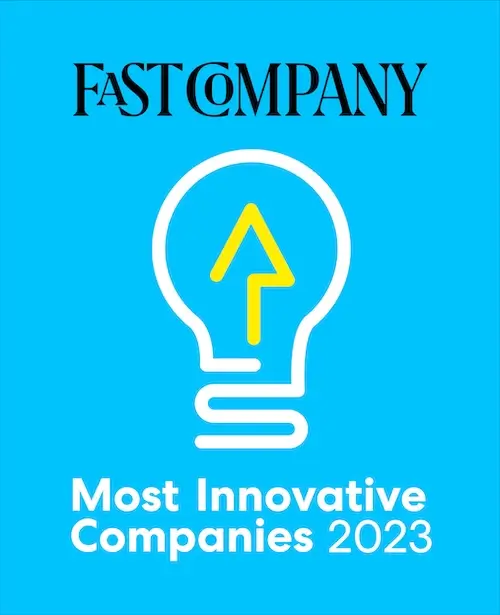Humankind has gained tremendous amounts of intelligence throughout history, and by and large, these gains have stemmed from human innovations.
Yet, throughout the centuries, some have been resistant to technology that is novel and nominally superior. Although mechanized looms boosted the economic efficiency of textile production, for example, the Luddite handloom weavers — anticipating that such innovations would render them obsolete — found ample reasons to oppose them.
Lawyers today are not like the Luddites of old. But legal digital transformation really has not been a hot topic of discussion in the industry until now.
Due to the exponential growth of legal technology in recent years, legal services promise to be fundamentally different — in form, function, and delivery — in the very near future. McKinsey Global Institute estimates that nearly 25 percent of lawyers’ existing work can be automated, potentially. McKinsey also reports that those organizations that have undergone a legal digital transformation are “23-times more likely to acquire customers, 6 percent more likely to retain customers, and 19-times more likely to be profitable.”
Over the next few years, legal tech will help ‘unbundle’ the many aspects of the legal function. With the support of unified legal platforms, for instance, lawyers will be able to spend more of their time on higher-value, strategic work — instead of the lower rungs of the legal task ladder! Other legal services, meanwhile, will be fully or partially automated with the help of AI and automation.
The victors in legal’s digital evolution, of course, are in-house corporate counsel who can truly adapt and transform themselves. Previously overworked attorneys will become legal risk managers, legal knowledge engineers, and legal experts in design thinking. They can create new ways of solving legal problems and resolving clients’ issues — all with the support of advanced technology.
The Future of Legal Technology — Shifts That Will Improve In-House Legal Teams by 2025
Gartner, a research and advisory company, forecasts that 12 percent of in-house legal budgets will be devoted to legal tech by 2025. That is compared with 3.9 percent in 2020 and 2.6 percent in 2017. Although in-house legal departments have long been reluctant — and even risk-averse — around technological innovation, the COVID-19 pandemic has forced many to adopt — or at the very least think about — extensive automation for various legal functions. The only difficulty now is deciding which technologies to embrace more fully!
“The new pressures brought about by the coronavirus pandemic certainly have acted as a catalyst for this shift,” says Zack Hutto, Director of Advisory in Gartner’s legal and compliance practice. “Legal and compliance teams have rarely been frontrunners to modernize, digitalize, and automate. The pandemic has flattened staffing budgets and increased legal workloads; technology is the most obvious solution for many legal departments.”
Gartner’s latest research, based on its 2020 survey of corporate legal leaders, reveals legal tech’s likely impact on corporate legal and compliance objectives, productivity, and efficacy. Taken together, the following three predictions from Gartner can help legal leaders plan for — and adapt to — the near future of legal technology.
1. Legal Departments Will Increase Spending on Legal Tech Threefold
In the next four years, the proportion of legal budgets spent on technology is set to increase dramatically. By 2025, legal tech budgets will be three times as much as they are currently, as stated above.
Significant advancements in the legal tech market are driving legal leaders to expand their use of technology to meet productivity demands and support workflows. Accordingly, developing a multi-year legal tech strategy will be crucial to legal departments’ overall success. That means avoiding ad hoc technology purchases that fail to support the function in achieving business goals, both short- and long-term.
2. Legal Departments Will Automate Half of Legal Work Tied to Corporate Transactions
Fortunately and interestingly, demand for corporate transaction work has already recovered from “pandemic-driven lows.” As companies recover from COVID-19, and as the effects of the crisis lower acquisition valuations, M&A work will continue to be on the rise.
The average legal department reported that 33 percent of its corporate transaction work was automated, to some degree, in 2019. In keeping with this trend — and to keep up with new demand —55 percent of the legal department’s work on corporate transactions will be automatable by 2024.
Some leading legal departments will find enthusiastic innovation partners in legal tech providers, themselves. The key to success, though, is first pinpointing issues that can be solved with automation, instead of deploying legal tech in search of the problem!
3. Corporate Legal Departments Will Capture a Third of the Potential Benefit of CLM Investments
Legal tech and automation investments, such as contract lifecycle management (CLM) systems, often take longer than many legal leaders would like. The average legal team requires 2.4 years to recoup its initial financial investment. That is partly due to “ill-fitting” or “poorly adapted” systems.
Additionally, there is a failure to manage stakeholders’ expectations around a technology’s payback period. This helps creates the perception that new legal tech is underperforming or, worse still, problematic for the organization. Then, stakeholders’ disillusionment drives further disengagement. And if that perception becomes far too negative, organizations are forced to abandon a technology initiative altogether. This is a clear waste of possible six-figure investment and thousands of hours of staff time — all thanks to a failed CLM deployment.
To get the most return on CLM investments, ultimately, corporate legal departments must prioritize capabilities that match their current process maturity. This is opposed to a big bang-like approach, which will only garner a fraction of the anticipated value. If they do the former successfully, legal departments can expect to capture at least 30 percent of the potential benefit of CLM investments by 2025.
The Future of Legal Technology is ‘Now’
In a myriad of ways, then, legal is undergoing the digital transformation that other industries have already gone through. But because it is especially document-heavy, the sector stands to benefit enormously from digital transformation projects. Legal and other departments have long used legal automation for email, accounting systems, and word processing. They now see the value of deploying technology to automate tasks, like document drafting, management, and analysis, whether they are in the back office or the front office.
“Most of what (working professionals) do will not be possible without (machine-driven automation).,” Kevin Kelly writes in the 2017 book, The Inevitable: Understanding the 12 Technological Forces That Will Shape Our Future. “You might no longer think of it as a job, at least at first, because anything that resembles drudgery will be handed over to [artificial intelligence] … jobs that no one wakes up in the morning really wanting to do.”
In other words, AI will help overworked attorneys perform the work they have been doing all along — and do it much better. It will perform the kinds of tasks, such as deep analytics, that lawyers cannot do effectively by themselves. It will help them to discover work they never imagined needed completed. This will not only matter most to companies, but also expand who lawyers are as human beings, both creatively and strategically.
For more information on starting your legal digital transformation journey, download a complimentary copy of our e-book, “Three Stages of Legal Digital Transformation.”
Author:

Sarvarth Misra
Connect with us on Linkedin











